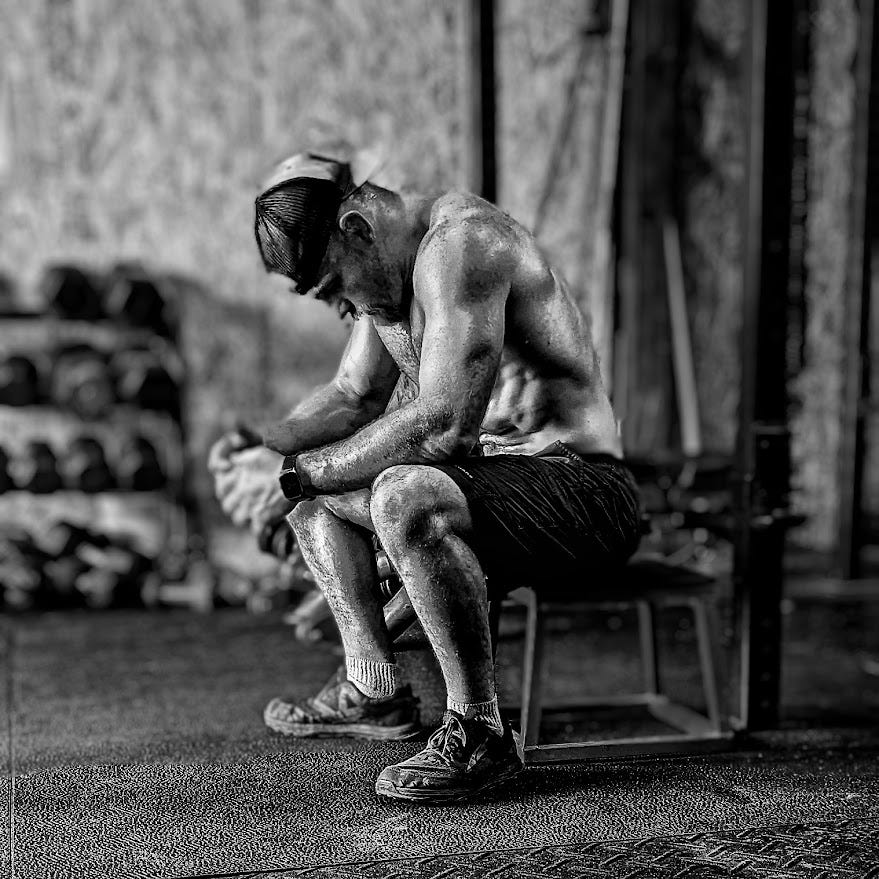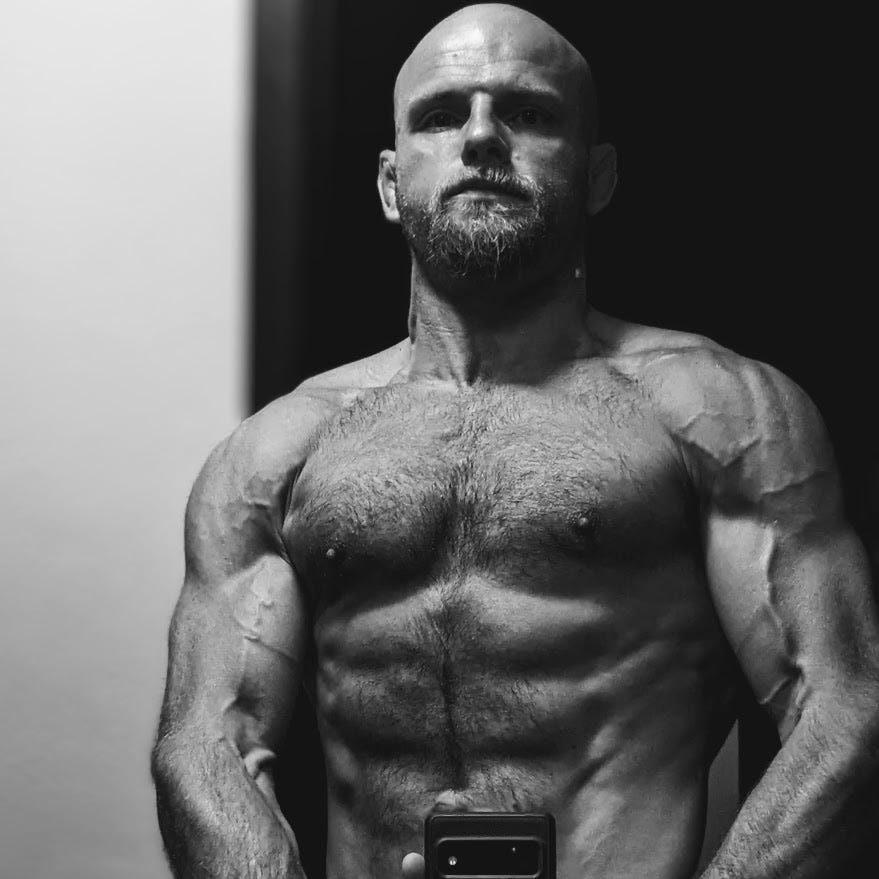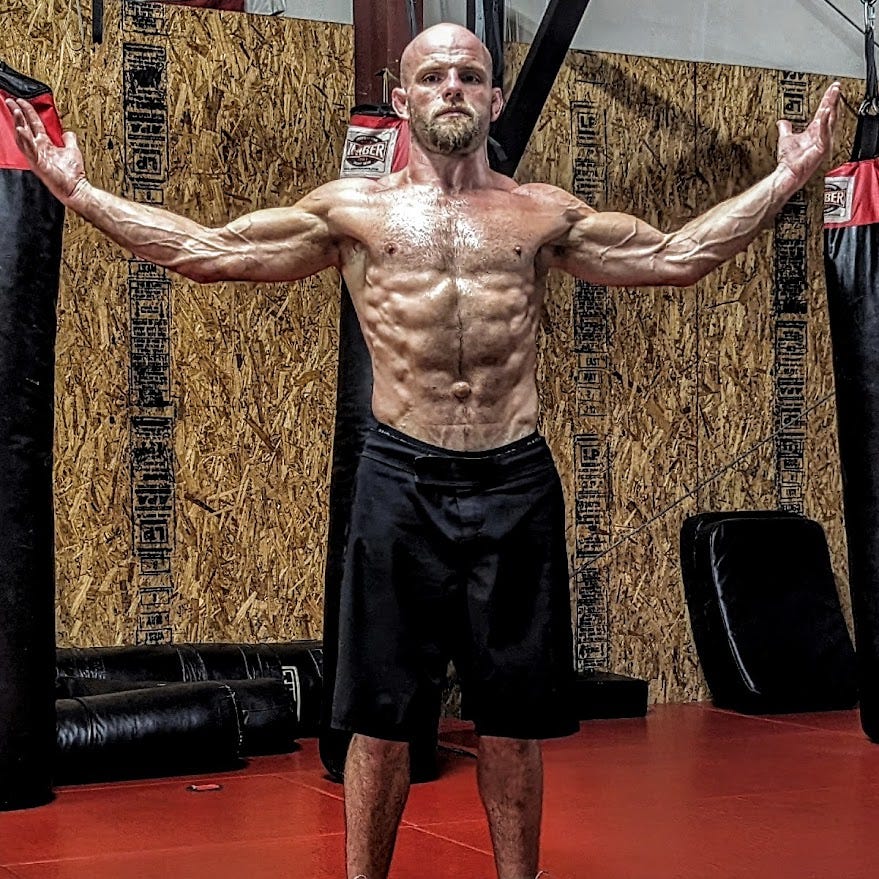Rebuilding Your Fitness in 18 Months
Since the Summer of 2022, at the age of 35 I've set multiple lifetime PRs in the deadlift, squat, ran an official 5K, unofficial 10K, and marathon. This is the process and what's coming next in 2024.
You must challenge your definitions in order to change yourself. Belief in an outcome rarely produces results, and hope is not a plan.
Aerobic endurance is the foundation for everything. The degree is variable, but the development is non-negotiable. Even at Westside Barbell they figured out “you have to be in shape if you want to get strong.”
If the process of endurance is defined as simply (though not easily) persisting, then inevitably the question must be asked, how fast? This becomes a contention of capacity.
By contrast, if your quest is to get strong, one must ask “how strong is strong enough?” Enough to improve my quality of life? Enough to improve my sport performance? Enough to set world records?
Below, I’ll describe each phase of my training throughout the past year-and-a-half. However, one should note that at the outset a “rebuild” wasn’t the goal. The goal was simply to address my physical deficits head on. At the time of origin, that meant committing to an endurance program. From there renewed assessments and corresponding training plans were made.
The approximate training blocks were as follows:
Endurance (12 weeks)
Illness / injury (4 weeks)
Strength (8 weeks)
De-Load (2-4 weeks)
Capacity (8 weeks)
Olympic Lifting + Injury (10 weeks)
Olympic Lifting (8 weeks)
Endurance:
To endure means to keep going when you want to quit. I had wanted to confront my disdain for (and fear of) endurance work (specifically running) for a long time. In fact, I made some efforts while I was in graduate school (e.g. “Couch to 5K” types of programs) that ultimately ended in injury, failure, and frustration.
It requires an entirely different mindset to “settle in and just go.” That is hard to do when you focus on distance (e.g. today I’m running 3 miles).
Rather, if I focus on “today’s training session will last 30 minutes”, the distance covered in that time becomes irrelevant. Therefore, the progression more accuratley targets “persisting when you want to quit.” You can run faster if you desire, but it won’t alleviate the discomfort any sooner.
The lifecycle of any endurance effort (also described below in the Capacity section) follows a predicatable pattern from: confidence, denial, despair, and hope. A few pinacle marks I’ve observed include about 1/3 into an effort (the shift from confidence to denial) is where you grasp the scope of what you’ve embarked on. About 2/3 into an effort we enter the “dark zone” (despair), shortly before that we realize that we must continue because it is a shorter route to the finish line than to renig on what we’ve invested so far.
The Test(s): As Mark Twight said, “show me yourself after 12 hours of continuous effort, and I won’t need to tell you who you are.”
“A Marathon:”
40 cals on Airbike + 400m walk or run
Repeat for 6 hours.
Strength:
Strength is probably my most well developed domain. In a purely theoretical discussion of energy systems, transitioning to a capacity block after an endurance block would have made sense.
However, from a strategic standpoint, I wanted to re-establish some comfort (or rather familiar discomfort) after spending 12-weeks stretching that comfort zone with endurance.
Strength is the ability to hold tension, a maximal contraction. This requires a different kind of confrontation than endurance work. While I would not say I’m “good” at endurance work, it became “easy(ier)” to “just keep going.” I guess I’m a grindy kind of person…
On the other hand, if you cannot lift a barbell, you fail. Negotiations and estimations such as reducing the load and increasing the rep volume, loose their accuracy and ability to predict a true test of strength the further from the test they get (e.g. trying to estimate a 1 rep max from a 3 rep max versus a 10 rep max).
Developing tempo (paused) lifts and appropriate supports (supplemental and antagonist) lifts were important for hypertrophy, but also created some novel stimulus in addition to the main “working sets / lifts.”
During this training phase I’m most proud of dramatically improving my squat technique. This wasn’t a liftetime PR and hardly as impressive as my deadlift, but it was a major personal achievement. Similar to the endurance process, if the emphasis had only been placed on the load / pace rather than the movement and tempo; this achievement wouldn’t have been possible.
The Test(s): Outside of competition (power lifting), a true 1RM usually isn’t necessary. Simple tools can be used to compute an estimate or E1RM. A simple 2-3 rep max is an effective measure for most people and safe enough to train somewhat frequently.
Press Movement (e.g. bench press)
Squat Movement (e.g. back squat)
Hinge Movement (e.g. deadlift)
Official powerlifting competitions combine these figures for a raw total. The total can further be multiplied by a coefficient to give you a relative P4P score.
Work Capacity / Metabolic Conditioning:
Work capacity can be defined as the ability to resist fatigue. In that sense, we have a number of limitations that can be addressed: oxygen mobilization (waste clearance), recoverability (between rounds or training sessions), and movement efficiency (mobility).
As with endurance, the cycle of effort (and thereby change) is remarkably similar to the grieving process:
Confidence (I can…)
Denial (I want (it to be different)…)
Despair (I can’t…)
Hope (I will…)
Achievement (I am…)
Capacity it the most complicated and inhernetly the most misunderstood of these physical attributes or training blocks. For example, it may not be inherently clear whether one’s mobility or oxygen mobilization are the limiting factor in their “Death by Burpee” score — of course, the two are related.
The merger of strength and endurance worlds will become clear when capacity is truly tested. One will have a desire to double down on the attribute they’re already good at. Endurance athletes will want more endurance, hoping more miles will translate to more watts during a short interval. Likewise, strength folks will similarly hope a few more pounds on their deadlift will alleviate the burning in their lungs.
Intensity is, by definiition, unsustainable, volatile. At some point we will fall flat and then it is time to re-focus and move on. For example, I wanted to push this program past the 6-week mark, but eventually my performances started to decline. I had to face the confrontation that my physiology wasn’t yet capable of what I was wanting it to do, and the current methods of training had reached their maximum adaptation … for now.
The Test(s): There are several facets to work capacity that require their own testing measure. Obviously, movement limitations will impair the efficiency and one’s “capacity” of performing that movement. Movement is the foundation and should be addressed first. After an aerobic foundation has been laid, O2 mobilization / CO2 tolerance can be addressed, and finally lactate threshold / recoverability becomes the focus:
O2 Mobilization: 300FY - 10 min bike test
On an assault or echo bike, burn as many calories as you can in 10 minutes; aim for bodyweight or better.Recoverability: DBB - death by burpee.
Minute 0:00 - 0:59 = 1 burpee, Minute 1:00 - 1:59 = 2 burpees, Minute 2:00 - 2:59 = 3 burpees, etc. until you aren’t able to complete the required burpees in within the minute.
Olympic Lifting (power):
Somewhat confusingly, the greatest tests of power and explosive movement along with mobility (range of strength) are the Olympic lifts. “Powerflifting” refers to strength or non-dynamic movements.
There are a multitude of reasons I wanted to dive into this world, one of which was to address mobility issues in my hips and ankles. If you’ve ever wondered if you have mobility restrictions in any major joint (hips, shoulders, knees, ankles) you’ll find out on your first heavy Olympic lift.
There are “muscle variaions” of the lifts where the barbell is essentailly lifted in a non-explosive manner, simply pulling it from the ground without changing your hip level.
By contrast, if one does not have any mobility restrictions, the “squat” or full competition versions of the lifts should have a greater value than the “power” variations where the barbell is received in a “power” or quarter-squat position.
The reason for this is that as load increases, you will not be able to lift the barbell as high — far below your shoulders. As a result, the barbell stops moving upward and the lifter lifts their feet so that they can pull themselves under the bar (in the case of the clean and snatch) — or push themeselves under it in the case of the jerk.
I was overzealous in what I thought I could accomplish in 8 - 12 weeks, although this was an education process nonetheless. There were some improvements in my mobility, which was the goal; but also of note was that I didn’t suffer any major detriments to my work capacity or aerobic fitness (due in part to ongoing Zone 2 warm ups).
The Test(s):
Total:
Snatch:
Clean & Jerk:
As with powerlifting (strength), the raw total can be multiplied by a coefficient (Sinclair in this case) to give a relative P4P score.
Testing and Record Keeping:
When one begins preparring for a specific test, it ceases to be an effective test. In other words, the idea of being “cross fit”, implies that fitness is achieved in support of other (athletic) endeavors.
In my case, if improving my 300FY score or deadlift reaches a point of necessary training volume, and corresponding recovery time, that my grappling ability starts to atrophy, I have a problem.
This was specifically the case when I “tested” to see if I could cut to 162 lbs. to make the lightweight division of IBJJF. Fortunately, I did this “test” in a preperatory fashion rather than for an actual competition. However, the point here is that I punched down to 164 lbs. and a desperate 5.5% body fat.
Needless to say, I looked incredible, but was in no condition for fighting. The “test” of bodyfat and weight failed to be an adequate indicator of fighting performance. I was basically a bodybuilder staggering across a stage at that point.
Regarding notes and logging tools, there is a lot of useless technology out there — literally hundreds of apps. During most of this 18-month process I tracked individual workout in an old fashioned notebook.
I will note that for the strength and power blocks, a simple app, was helpful for noting loads from session to session, week to week.
However, similar to the testing process, we need to be attentive to how much energy and “noise” we involve in the process. In other words, 5-years from now I won’t care how what the load was for a random movement for random number of sets, on a random Tuesday.
What I do care about is the long term trend for various tests — how does my 40/400 score this year compare to last year and the year before that? For that, a good old spreadsheet can be helpful to organize data without the clutter of day-to-day training.
Summary:
While this wasn’t a traditional or pre-planned periodization program, it was an incredible journey to dive as deeply as I could into each of these domains. If I couldn’t completely address what limits my success in each of them, I at least developed a comprehension of their operating mechanics.
Interestingly, my next training program (“Escape Velocity”) continues the regression by setting the goal of “learning to train yourself.” The question now is “what to train” which also implies “at the exclusion of what?” Both are predicated on “what do I want to achive?”
In my case, that is to be a better grappler. The domain that correlates most closely to grappling is capacity; strength and power are sensible tools / means within that system. However, some degree of aerobic maintenance will need to be fulfilled as well.









